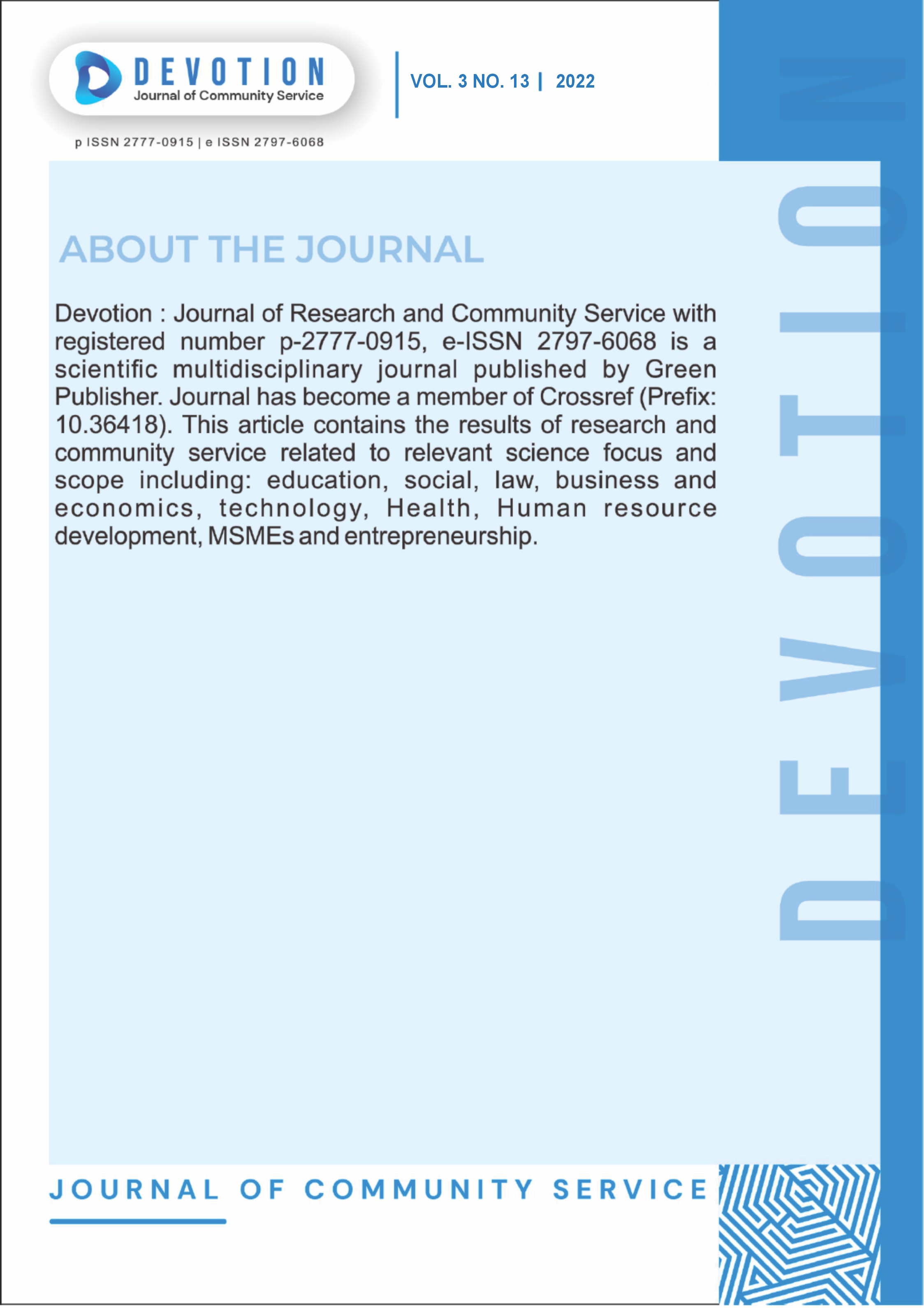Al Lathif Islamic School Principal Performance Analysis In Balanced Scorecard Perspective
DOI:
https://doi.org/10.36418/dev.v3i13.287Abstract
This study aims to analyze and assess the performance of principals who have implemented school-based management (SBM). An alternative management system tool to measure the work efficiency of the institution in measuring the performance of Al Lathif Islamic School in the city of Bandung using the Balanced scorecard model. A balanced scorecard is a management tool that translates the vision, mission, and organizational strategy of the Al lathif Islamic School into a set of four perspectives, namely the financial, customer, and internal business processes, as well as learning and growth perspectives. This study uses a quantitative approach with descriptive analysis. Primary data in the form of a questionnaire is used to measure the performance of the financial perspective and the perspective of learning and growth, while the measurement of the performance of the financial perspective and internal business process perspective uses secondary data. Sources of data were obtained from Educators, Education Personnel, Students, and Parents, EDS Documents, The Education Unit Accreditation Instrument (2021), Principal's Annual Work Assessment, School Financial Accountability Reports, and School Alumni Documents. The results showed that the performance of Al Lathif Islamic International School was in the very good category. Based on the financial perspective, obtaining good performance, namely meeting the economic requirements, effectiveness, and efficiency. Based on the perspective of the customer get a very good value by applying five dimensions (tangibility, reliability, responsiveness, assurance, empathy). Based on the internal business process perspective, the measurement results can be shown from the innovation aspect, operation aspect, and alumni service that has shown very good value results. Based on the learning and growth perspective, four indicators, namely the range of employee satisfaction, training, employee loyalty, and employee performance productivity are in the very good category
Published
Issue
Section
License
Copyright (c) 2022 Sri Tubilah Noor

This work is licensed under a Creative Commons Attribution-ShareAlike 4.0 International License.
Authors who publish with this journal agree to the following terms:
- Authors retain copyright and grant the journal right of first publication with the work simultaneously licensed under a Creative Commons Attribution-ShareAlike 4.0 International. that allows others to share the work with an acknowledgement of the work's authorship and initial publication in this journal.
- Authors are able to enter into separate, additional contractual arrangements for the non-exclusive distribution of the journal's published version of the work (e.g., post it to an institutional repository or publish it in a book), with an acknowledgement of its initial publication in this journal.
- Authors are permitted and encouraged to post their work online (e.g., in institutional repositories or on their website) prior to and during the submission process, as it can lead to productive exchanges, as well as earlier and greater citation of published work.













